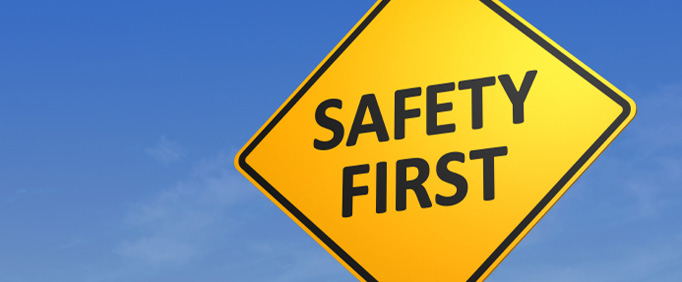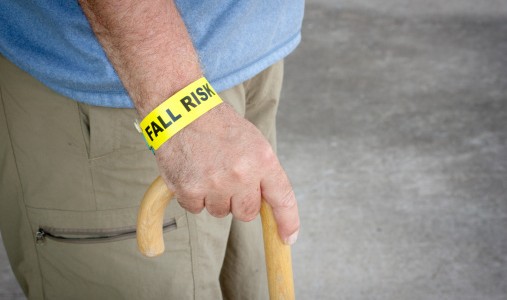As your family members or loved ones age, so does their home. It is good practice to step back occasionally and examine the home to see how well the living arrangement supports your loved ones’ daily needs and activities. There are many steps you can take to ensure that your family members stay safe and comfortable in their home.Often these changes can be made with little or no cost, while they also make the home more user-friendly and welcoming. In this column, I note some safety tips to evaluate in your loved ones’ homes, so you can help them successfully age in place.
I’ve written before about the numbers: Nearly 90 percent of olderAmericans want to stay in their current home as they age. Overwhelmingly, that’s where people want to live if they need care as they get older. But sometimes, features in your loved ones’ homes can be their biggest obstacle to remaining independent. As a caregiver, I know the safety of your loved one is your primary concern. By taking small but-practical steps, including the modifications I describe below, you can transform your loved ones’ “home sweet home” into “home safe home.”
No-Cost Changes for Home Safety
- Remove all scatter and throw rugs, which can lead to falls.
- Open blinds and curtains, and raise shades during daylight hours to increase natural light inside the home.
- Place electrical, phone and computer cord, along walls, where they will not trip anyone. To avoid the risk of fire, do not run the wires under carpeting.
- Remove clutter fromthe staircases and hallways to prevent trips and falls.
- Set the hot-water heater to 120 degrees to prevent scalding and to reduce energy consumption.
While all of the above can be done without spending money, you might find some changes are hard for your loved one to accept. For instance, Mom may like her scatter and throw rugs because they add color to her rooms. It’s important that you explain to her why you are suggesting removing these trip hazards. Tell her you want her to consider the change because you’re worried about her falling and seriously hurting herself. Be creative in how you approach the conversation – perhaps suggest that she could move the rug from the floor to the wall or add throw pillows on a chair or sofa to add color without safety risk.
Low-Cost Changes for Home Safety
As you make these no-cost changes, I suggest you look around your parents’ house to see whether or not you could take additional steps to ensure the safest possible home. Here are some low-cost changes ($35-$75) and will make a home even safer:
- Increase lighting by using the highest-watt bulbs possible for fixtures or lamps.
- Place double-sided tape or carpet mesh under area rugs to prevent slipping.
- Install offset hinges on all doors to add 2 inches of width for easier access.
- Replace traditional light switches with easy-to-use, rocker-style switches.
- Install night lights in hallways between bedrooms and bathrooms.
- Replace knobs on cabinets and drawers with easy-to-grip D-shaped handles.
- Add anti-slip strips in the bathtubs and showers.
- Mount grab bars in the bathtubs and showers, and place a sturdy water-proof seat in the shower so your loved one can sit down while bathing or showering.
- Install a handheld adjustable shower head for easier bathing.
- Install handrails on both sides of each stairway to support your loved ones’ sure footing.
You can find low-cost tools and products at your local hardware or home improvement store. It's important that you or a contract or properly install all the updates, so find a reputable handyman to help you if you need assistance.
It might be hard for your loved one to consider certain features, such as the installation of grab bars in the bathroom. “I don’t want those things,” Mom might say. “It’ll look like a hospital room.” This is the time to speak from your heart. Use “I” statements. Tell her you worry about her and you want her to be safe in her home. Add that grab bars come in a range of colors and finishes that can match the decorating scheme of any bathroom. Tell her the days of “institutional-looking grab bars” are long gone. Go with her to the store to look at what’s now on the market.
In addition to the changes listed above, always remember to have a properly rated fire extinguisher in the kitchen area, and fire and carbon monoxide detectors on all floors of each house.
AARP recently developed a video, “There’s No Place Like Home.” (Watch: Part One, Part Two.) It documents how easy and affordable it can be to update kitchens and bathrooms to dramatically improve home safety. You can show the videos to your parents to help them understand that they can easily improve their safety and your peace of mind.
Extensive Changes
Since your loved ones likely want to live at home as long as possible, consider more extensive changes to the home so that it will be sure to meet loved ones’ daily living needs. Design features such as multi-level countertops and pull-out drawers in the kitchen provide easy access to pots and pans. No-step entries to the home may cost more, but they can make homes safer and more comfortable for everyone.
AARP and the National Association of Home Builders (NAHB) have collaborated to help develop a certification program for remodelers, builders, and developers who focus on the connections between home design and the needs of aging people. The Certified Aging-in-Place Specialist (CAPS) program teaches building professionals about the changing needs of people as they age, as well as products and building techniques that can better support aging in place. While there are more than 1,700 certified professionals in the U.S., there is only one in Oklahoma.
Growing Consumer Interest
Realtors, interior designers, and architects have discovered that consumers are starting to show more interest in features and products that promote successful aging in place. People are also realizing that when homes are designed and constructed with these features, the homes’ value increases.
In Georgia, an “Easy Living Home” designation has been developed. It focuses on three key features of home design; all new homes constructed using the Easy Living Home approach have:
- Accommodations for first-floor living, with the master bedroom and full bath on the first floor
- At least one no-step entrance to the central living area of the home
- A maximum clearance (up to 36 inches across) in all doorways for easy movement throughout the home
Proponents contend that these homes are “easy to build, easy to visit, and easy to sell.” Across the country, builders, developers, and realtors are replicating elements of “universal design” – design informed by features that provide comfort, safety, and the ability to age in place. There is significant consumer interest in aging in place and the type of home required for it.
Home Safe Home
No home can be “sweet” if it isn’t “safe.” The types of home features and fix-its described in this column make homes easier to use, which increases the independence of residents and makes caregiving easier.
I hope that these ideas prompt you to evaluate your loved ones’ home and to make the kinds of changes that you deem necessary and beneficial.
Elinor Ginzler is a national expert on independent living and aging issues. She currently serves as AARP’s lead spokesperson on caregiving, housing, and mobility issues, including older drivers’ safety.
Source: http://www.lifeseniorservices.org/seniorline/Turning_Home_Sweet_Home_Into_Home_Safe_Home.asp







